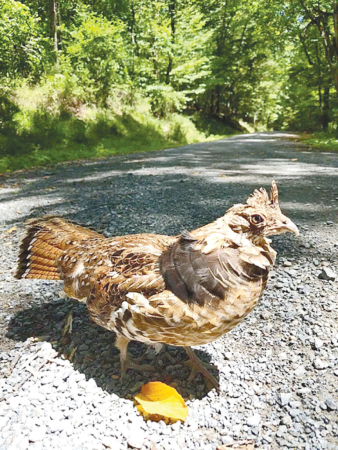Like a lot of other hunters, my hunting season is winding down fast; I may get out for a little flintlock hunting and a little rabbit hunting, but my time in the woods will be pretty limited. I managed to get out at least a half dozen times during this past deer season, but something a bit disturbing that I noticed this year is it’s probably the first year I can remember that I didn’t see or hear a single grouse. Now in all fairness, I’ll admit that my time trekking through the woods was limited to a quiet and direct approach to a treestand, where I spent most of the day. Even in years past, however, I often heard a grouse flush or drumming off in the distance, but not this year.
The declining grouse population is nothing new; those of us involved in the outdoors have known for several years that grouse numbers were dropping. It’s a fact that populations rise and fall in five to ten-year cycles, but in recent years the fall has been increasing. So what are some of the factors that may be contributing to the decline in grouse numbers?
As in most cases, there are actually several factors that are likely contributing to the decline, including cold, damp springs, prolonged cold winters, predation, habitat loss, and disease. Probably two of the greatest factors are the loss of favorable habitat and disease. When it comes to habitat, it’s a fact that much of Pennsylvania’s forest land is becoming more mature, and that does not favor the grouse. Grouse actually prefer younger, thicker forests. The other significant factor is disease and, more specifically, the West Nile Virus. The virus is transmitted by mosquitoes, and it first showed up here in Pennsylvania between 2001 and 2003. It appears that the virus had a greater effect in the southern part of the state, probably because the mosquitoes were more prolific. Still, grouse populations appear to be on the decline even in the higher elevations in the northern part of the state as well.
The Pennsylvania Game Commission is now in the last year of a ten-year Grouse Management Plan, and in an attempt to limit losses, grouse seasons have been reduced. In addition, efforts are being made to create and maintain more suitable grouse habitats, and the Game Commission is continuing to look at what can be done to limit the transmission of the West Nile Virus. Hopefully, these efforts will pay off, and the grouse will not go the way of the ringneck pheasant.
While I have had some great days pursuing grouse in years past, I don’t pretend to be a hard-core grouse hunter. For those of you who are serious grouse hunters, however, I highly recommend you look into what is probably one of, if not the greatest, book ever written on grouse. The book was written by Tim Flanigan, an outdoor writer and wildlife photographer. Tim is a personal friend of mine, and I know for a fact he is one of the best and most dedicated grouse hunters I know. The book has a hard cover with jacket and is 11×8.5 inches. The 40 chapters include hundreds of Tim’s spectacular photos showing the grouse’s natural history and anatomy. Tim also tells how to work coverts effectively, early-season strategies, dog training tips, information on shotguns and loads, and much more. For more information on the book, go to http://www.WildRiverPress.com.




